Abstract
A mathematical method is developed which enables us to treat exactly the process of coincidental evolution under mutation, unequal intrachromosomal crossing-over as well as ordinary crossing-over between homologous chromosomes in a finite population of the effective size N. It makes use of finite difference equations involving two quantities denoted by fi and phi i, in which fi is the identity coefficient of two gene members that are i steps apart on the same chromosome and phi i is that of two members i steps apart on two homologous chromosomes. When the number of genes (n) per family is large, the finite difference equations can be approximately by ordinary second-order differential equations which can then be solved analytically. Results obtained by the present method are compared with the corresponding results previously obtained by one of us (T.O.) using conventional diffusion models of gene frequency changes in population genetics. It is shown that the previous results obtained by T.O. regarding second-order statistics are essentially valid, and they give good approximations particularly when N beta is small, where beta is the rate of ordinary interchromosomal crossing-over within the multigene family.
Full text
PDF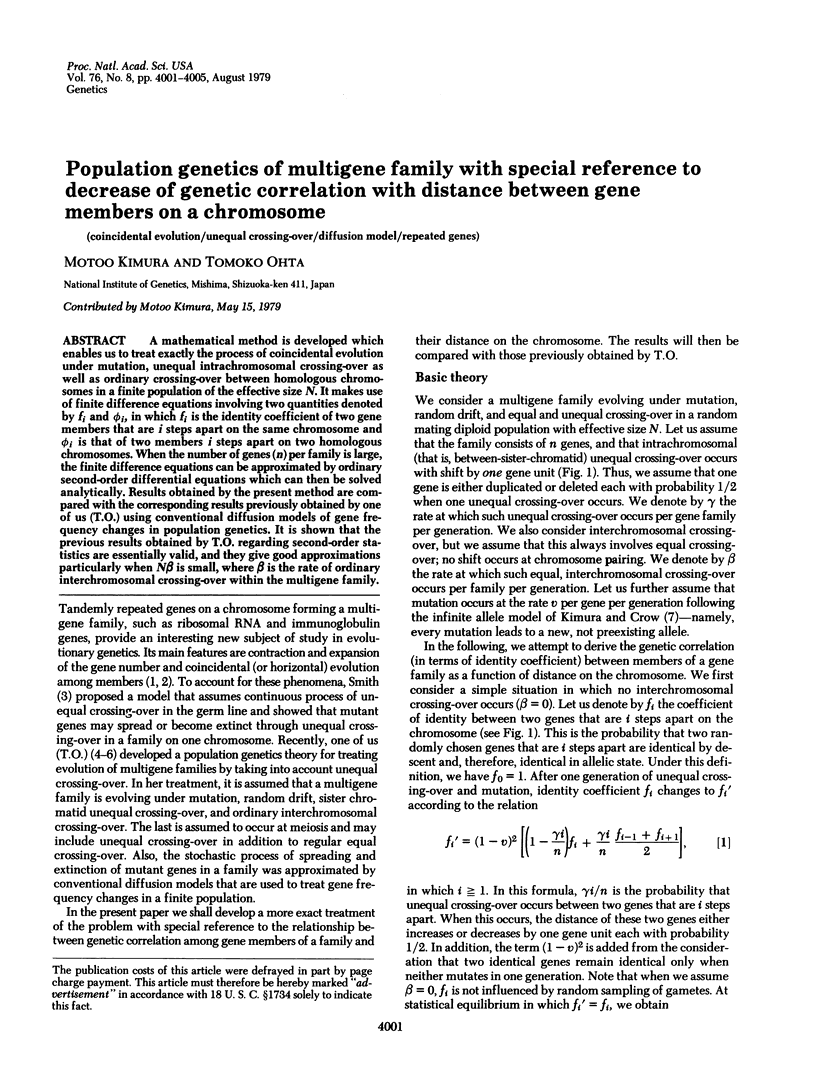
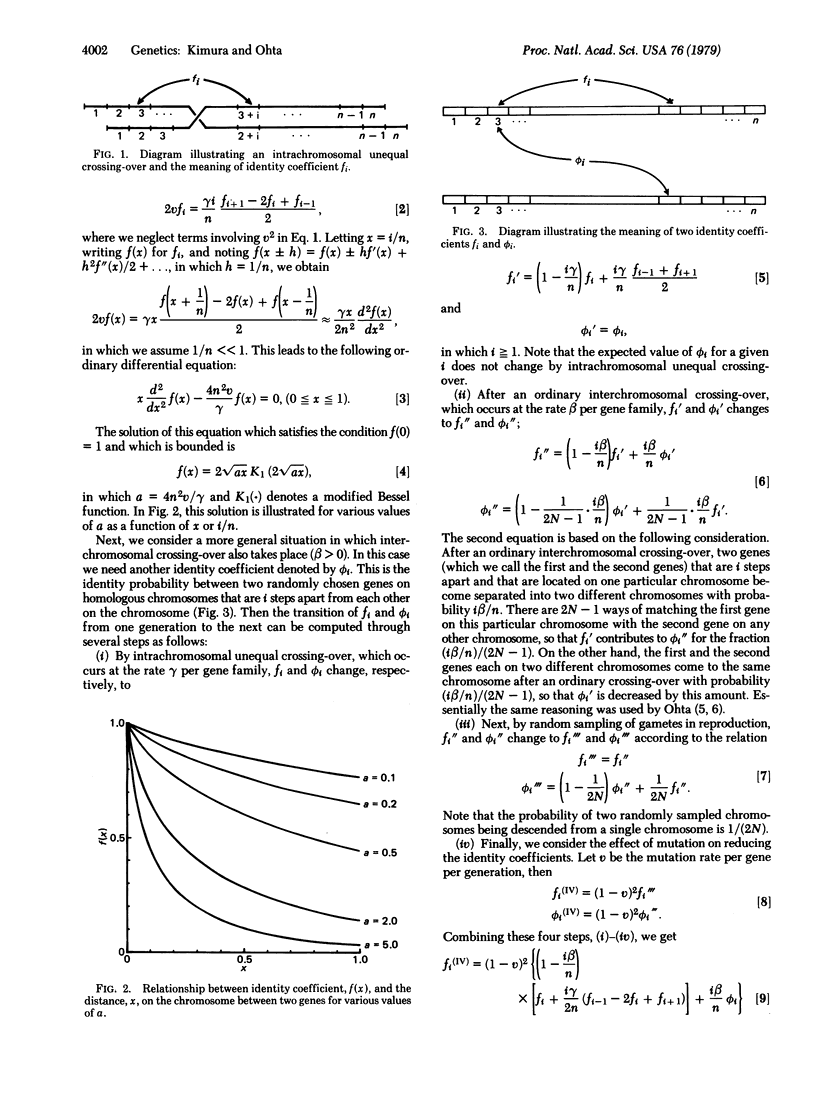
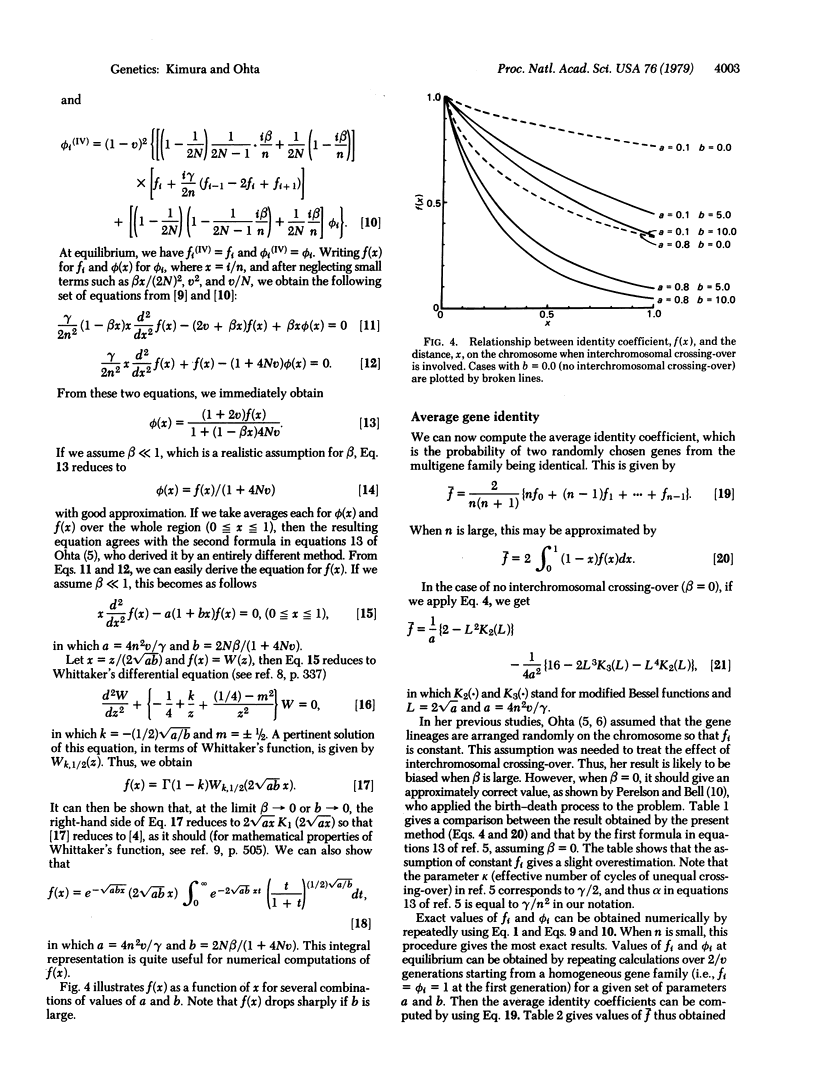
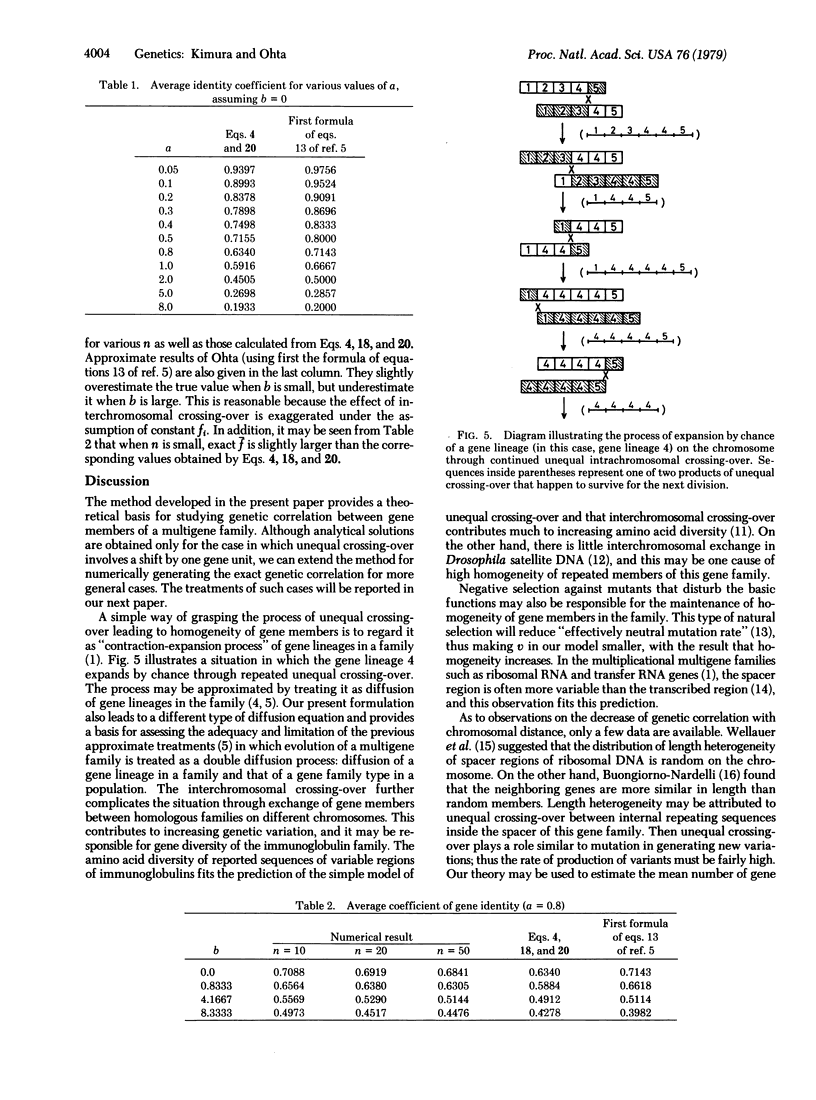
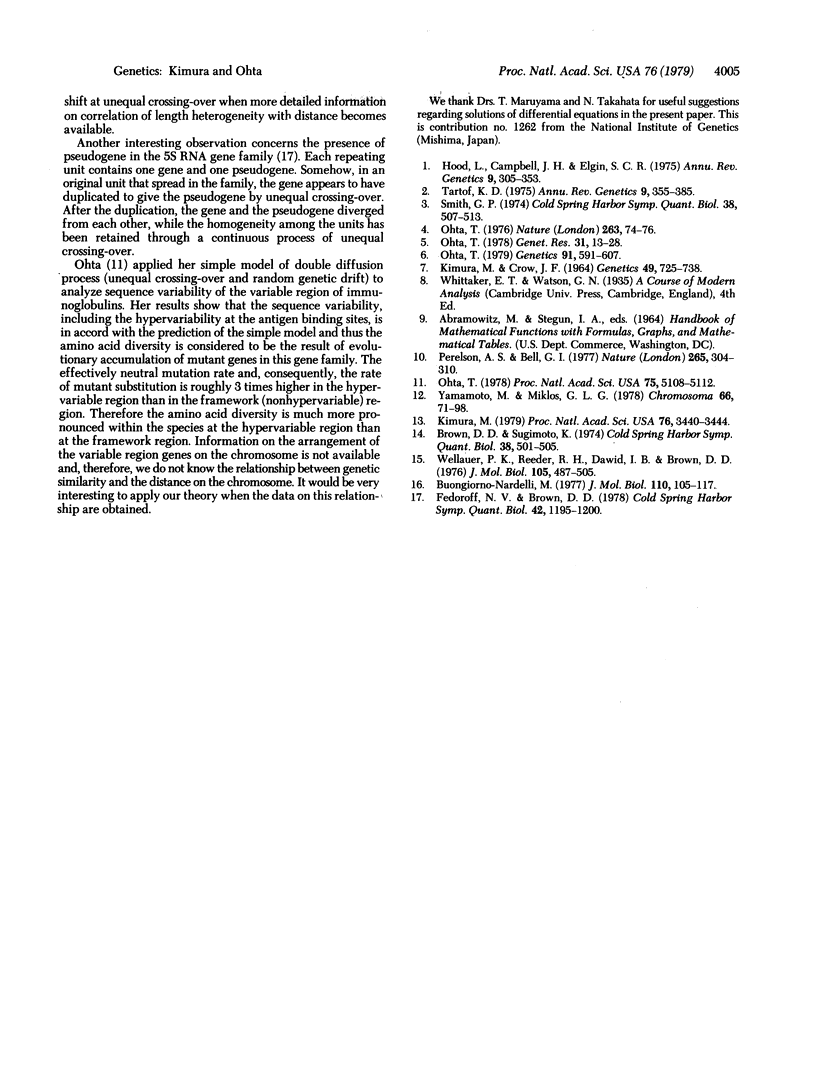
Selected References
These references are in PubMed. This may not be the complete list of references from this article.
- Brown D. D., Sugimoto K. The structure and evolution of ribosomal and 5S DNAs in Xenopus laevis and Xenopus mulleri. Cold Spring Harb Symp Quant Biol. 1974;38:501–505. doi: 10.1101/sqb.1974.038.01.054. [DOI] [PubMed] [Google Scholar]
- Buongiorno-Nardelli M., Amaldi F., Beccari E., Junakovic N. Size of ribosomal DNA repeating units in Xenopus laevis: limited individual heterogeneity and extensive population polymorphism. J Mol Biol. 1977 Feb 15;110(1):105–117. doi: 10.1016/s0022-2836(77)80101-0. [DOI] [PubMed] [Google Scholar]
- Fedoroff N. V., Brown D. D. The nucleotide sequence of the repeating unit in the oocyte 5S ribosomal DNA of Xenopus laevis. Cold Spring Harb Symp Quant Biol. 1978;42(Pt 2):1195–1200. doi: 10.1101/sqb.1978.042.01.120. [DOI] [PubMed] [Google Scholar]
- Hood L., Campbell J. H., Elgin S. C. The organization, expression, and evolution of antibody genes and other multigene families. Annu Rev Genet. 1975;9:305–353. doi: 10.1146/annurev.ge.09.120175.001513. [DOI] [PubMed] [Google Scholar]
- KIMURA M., CROW J. F. THE NUMBER OF ALLELES THAT CAN BE MAINTAINED IN A FINITE POPULATION. Genetics. 1964 Apr;49:725–738. doi: 10.1093/genetics/49.4.725. [DOI] [PMC free article] [PubMed] [Google Scholar]
- Kimura M. Model of effectively neutral mutations in which selective constraint is incorporated. Proc Natl Acad Sci U S A. 1979 Jul;76(7):3440–3444. doi: 10.1073/pnas.76.7.3440. [DOI] [PMC free article] [PubMed] [Google Scholar]
- Ohta T. An Extension of a Model for the Evolution of Multigene Families by Unequal Crossing over. Genetics. 1979 Mar;91(3):591–607. doi: 10.1093/genetics/91.3.591. [DOI] [PMC free article] [PubMed] [Google Scholar]
- Ohta T. Sequence variability of immunoglobulins considered from the standpoint of population genetics. Proc Natl Acad Sci U S A. 1978 Oct;75(10):5108–5112. doi: 10.1073/pnas.75.10.5108. [DOI] [PMC free article] [PubMed] [Google Scholar]
- Ohta T. Simple model for treating evolution of multigene families. Nature. 1976 Sep 2;263(5572):74–76. doi: 10.1038/263074a0. [DOI] [PubMed] [Google Scholar]
- Perelson A. S., Bell G. I. Mathematical models for the evolution of multigene families by unequal crossing over. Nature. 1977 Jan 27;265(5592):304–310. doi: 10.1038/265304a0. [DOI] [PubMed] [Google Scholar]
- Smith G. P. Unequal crossover and the evolution of multigene families. Cold Spring Harb Symp Quant Biol. 1974;38:507–513. doi: 10.1101/sqb.1974.038.01.055. [DOI] [PubMed] [Google Scholar]
- Tartof K. D. Redundant genes. Annu Rev Genet. 1975;9:355–385. doi: 10.1146/annurev.ge.09.120175.002035. [DOI] [PubMed] [Google Scholar]
- Wellauer P. K., Reeder R. H., Dawid I. B., Brown D. D. Arrangement of length heterogeneity in repeating units of amplified and chromosomal ribosomal DNA from Xenopus laevis. J Mol Biol. 1976 Aug 25;105(4):487–505. doi: 10.1016/0022-2836(76)90230-8. [DOI] [PubMed] [Google Scholar]
- Yamamoto M., Miklos G. L. Genetic studies on heterochromatin in Drosophila melanogaster and their implications for the functions of satellite DNA. Chromosoma. 1978 Mar 22;66(1):71–98. doi: 10.1007/BF00285817. [DOI] [PubMed] [Google Scholar]


